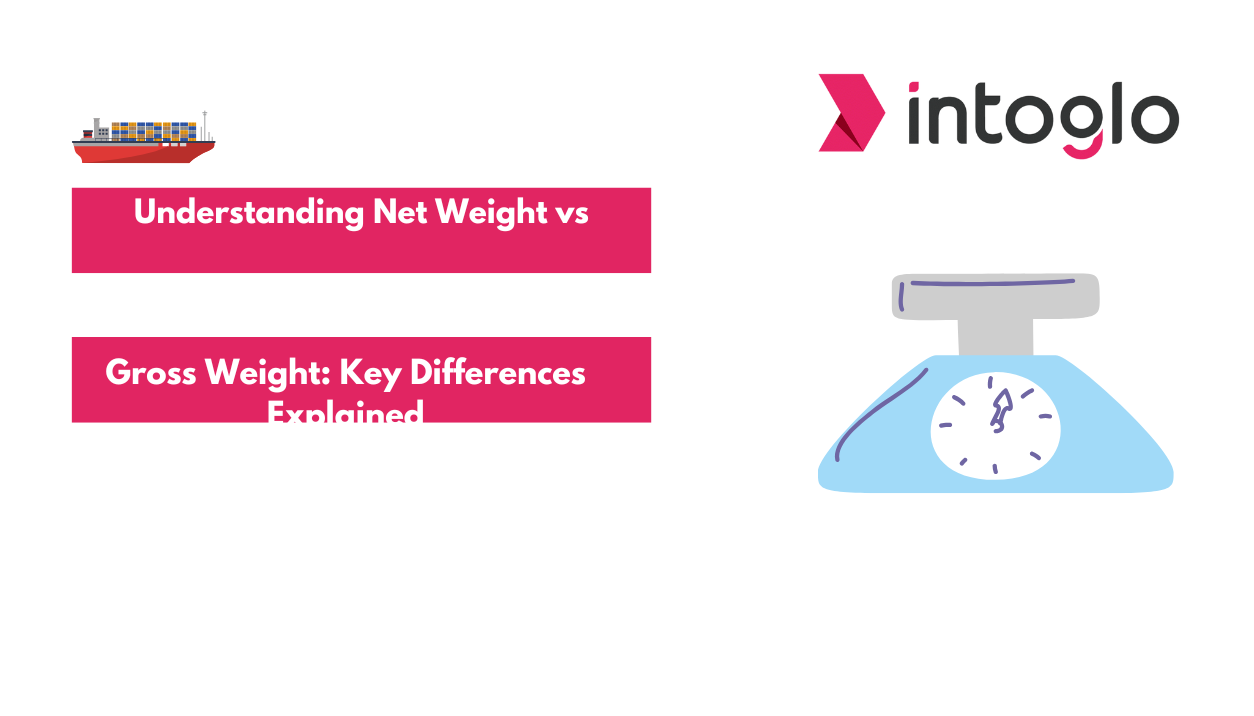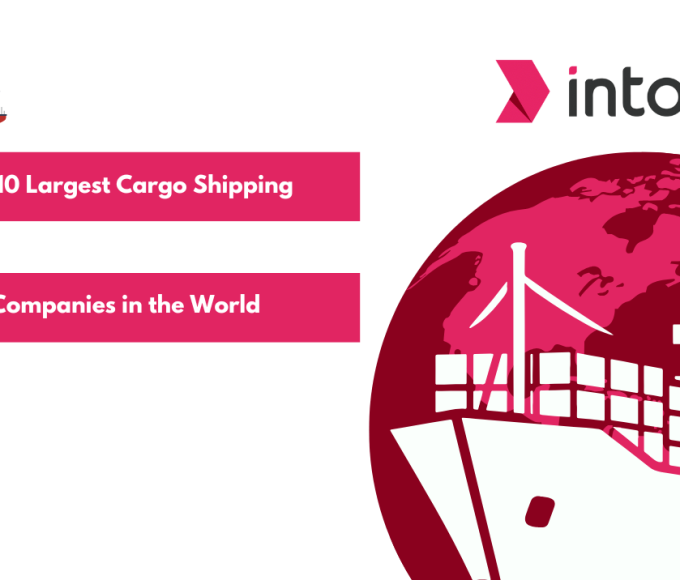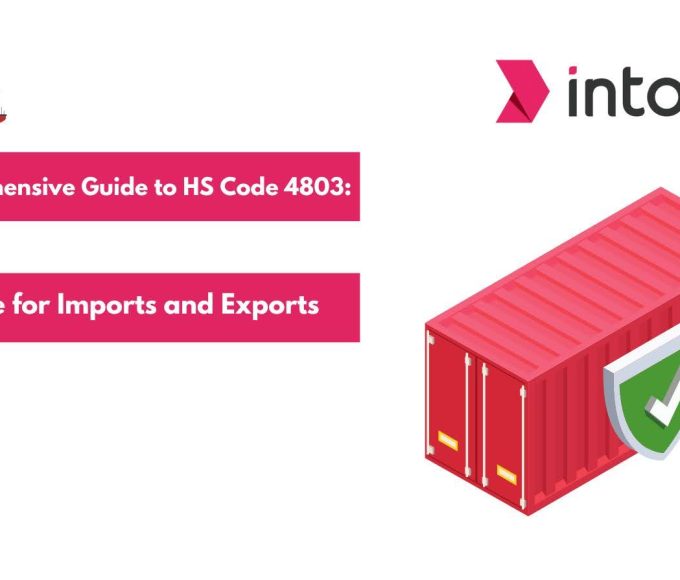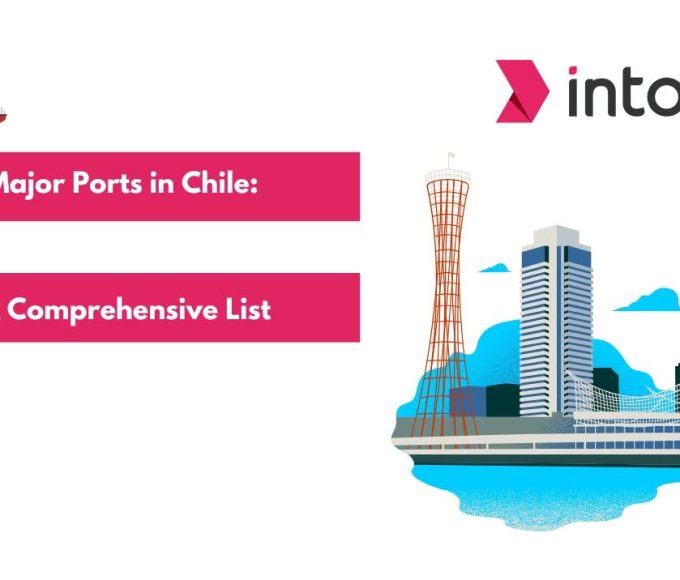When dealing with shipping, especially internationally, understanding the difference between net and gross weight is essential. These terms aren’t just there to fill out your shipping label—they play a key role in determining shipping costs, customs duties, and even regulations that vary from country to country.
International shipments come with complexities, and knowing how these weights are calculated can help you avoid unexpected fees and delays. In this article, we’ll break down what these weights really mean, why they matter, and how they affect your shipping process. By the end, you’ll have a solid understanding of when and why each one is needed.
Let’s get started!
What is Net Weight in Shipping?
Net Weight refers to the weight of the goods or product itself—nothing more, nothing less. In other words, it’s the weight of the item you’re shipping without any packaging, containers, or other materials included. When calculating net weight, you’re essentially measuring just the product itself, which is important for customs purposes and determining the true cost of the goods being shipped.
For example, if you’re shipping a box of rice, the net weight would only include the rice inside—no packaging, no wrapping, just the product itself. This is the number used when calculating duties or taxes on the goods for international shipments.
How to Calculate Net Weight?
Determining net weight is straightforward when you follow the right steps. It simply involves deducting the packaging weight from the shipment’s total weight. Here’s the formula:
Net Weight = Total Weight – Tare Weight
Let’s break it down:
- Weigh the Entire Shipment: First, get the total weight of the entire shipment, including both the product and all its packaging (box, wrapping, etc.). This is the total weight that will be measured on a scale.
- Determine the Tare Weight: Next, figure out the weight of the packaging materials only. This includes the box, padding, and any other materials used to protect the goods. If you’re shipping multiple items in the same box, you’ll need to calculate the packaging weight for the entire shipment.
- Subtract the Tare Weight from the Total Weight: Finally, subtract the tare weight (packaging) from the total weight to get the net weight. This will give you the actual weight of the product being shipped.
Example:
- Total Weight (product + packaging) = 20 lbs
- Tare Weight (packaging materials) = 5 lbs
Net Weight = 20 lbs – 5 lbs = 15 lbs
So, in this case, the net weight of your shipment would be 15 lbs—the weight of just the goods, with no packaging included.
What is Gross Weight in Shipping?
Gross weight refers to the overall weight of a shipment, including the product itself and all its packaging, containers, and other materials used to protect or transport the goods. Essentially, it’s the combined weight of everything when shipping the product.
When shipping internationally, gross weight is often the number you’ll need to calculate shipping costs and determine whether your shipment fits weight restrictions or tariff brackets. Customs authorities also use gross weight when calculating import duties or taxes, as it reflects the entire weight of the goods in transit.
So, when you see the term “gross weight” on a shipping label or invoice, it refers to everything: the item itself, plus any boxes, pallets, shrink wrap, and other packing materials.
How to Calculate Gross Weight?
Calculating gross weight is simple—it’s just the total weight of the entire shipment, including both the product and all packaging materials. Here’s how to do it:
- Weigh the Product: First, measure the weight of the actual product(s) you are shipping. If you’re shipping multiple products, you’ll need to weigh each one and add them together.
- Add the Weight of Packaging Materials: Next, weigh the box, pallet, or any other packaging materials used for the shipment. This includes things like padding, bubble wrap, and any protective covers.
- Sum Everything Together: Add the weight of the product and the weight of the packaging to get the total gross weight.
Formula:
Gross Weight = Weight of Product + Weight of Packaging Materials
Example:
- Weight of Product = 15 lbs
- Weight of Packaging (box, bubble wrap, etc.) = 5 lbs
Gross Weight = 15 lbs + 5 lbs = 20 lbs
So, the gross weight of your shipment is 20 lb
Understanding Other Weight Terms
In addition to net, gross, and tare weight, there are several other weight-related terms that come up, especially when shipping vehicles, freight, or heavy equipment. Here’s a quick overview of those terms:
- Dimensional Weight (Volumetric Weight): This represents the weight calculated according to the package’s size rather than its actual weight. It’s commonly used by carriers to calculate shipping charges for bulky but lightweight items. It’s calculated using the package’s length, width, and height.
- Chargeable Weight: Shipping carriers usually use this weight to determine the cost of shipping. It’s usually the higher of either the actual weight (gross weight) or the dimensional weight. It ensures that both heavy and bulky packages are priced fairly.
- GVWR (Gross Vehicle Weight Rating): This is the highest weight a vehicle can safely handle, factoring in its own weight (curb weight), along with passengers, cargo, and any extra equipment. The GVWR is set by the manufacturer to ensure the vehicle is not overloaded and remains safe for use.
- Curb Weight: This is the weight of the vehicle when it is empty, with all standard equipment installed, and includes all fluids such as oil and gas. It does not include passengers or cargo. Essentially, it’s the “unladen” weight of the vehicle.
- Total Weight: This refers to the entire weight of the vehicle, including the curb weight plus any added cargo, passengers, or additional equipment inside or on the vehicle. For shipping purposes, this is important to calculate shipping costs or weight limits for transport..
Also Read: Understanding CBM in Shipping and Its Calculation Method
Net Weight vs Gross Weight
| Feature | Net Weight | Gross Weight |
| Definition | The weight of the product alone, excluding packaging and containers. | The total weight of the shipment, including the product and all packaging materials. |
| Includes | Only the goods/products being shipped. | The product, packaging materials (box, pallet, wrapping, etc.), and any additional shipping materials. |
| Excludes | Boxes, wrapping, pallets, and any other external materials. | Nothing—it includes everything in the shipment. |
| Used For | Determining the actual weight of the goods for inventory, pricing, and customs duties. | Used to calculate shipping costs, transportation load limits, and freight charges. |
| Example Calculation | Net Weight = Total Weight – Tare Weight (packaging weight). | Gross Weight = Product Weight + Packaging Weight. |
| Importance in Shipping | Helps in determining taxes, duties, and valuation of goods. | Important for shipping fees, vehicle load limits, and freight calculations. |
| Common Use Cases | Used in product labeling, customs declarations, and invoicing. | Used by shipping carriers to determine freight charges and space allocation. |
How Net, Gross, and Tare Weight Work Together in Shipping
In shipping and logistics, net weight, gross weight, and tare weight are closely linked, each serving a different purpose. When shipping a product, you don’t just consider its weight alone; you also need to account for the packaging and any additional materials used to protect it during transit. This is where these three weight terms come into play. Net weight represents the weight of the product itself, tare weight refers to the weight of the packaging, and gross weight is the total weight of everything combined.
- Net Weight: The weight of the product only (no packaging).
- Tare Weight: The weight of the packaging (box, wrapping, pallet, etc.).
- Gross Weight: The total weight of both the product and its packaging.
Gross Weight = Net Weight + Tare Weight
Imagine you’re shipping a box of chocolates:
- Net Weight (Chocolates only) = 5 kg
- Tare Weight (Box + Wrapping) = 1 kg
- Gross Weight (Chocolates + Box + Wrapping) = 6 kg
Also Read: Guide to Exporting Food Products from India to USA
How Accurate Weight Measurements Impact Shipping Costs?
Accurate weight measurements are a critical part of shipping, whether you’re sending small parcels or large freight shipments. Incorrect weight calculations can lead to increased costs, shipping delays, and even legal penalties. Here’s why precise weight measurement matters in logistics and transportation:
1. Ensures Correct Shipping Costs
Most shipping carriers charge based on gross weight or dimensional weight (whichever is higher). If the weight is miscalculated, you might end up overpaying or facing additional fees upon delivery. Accurate weight helps in avoiding unexpected shipping surcharges.
2. Helps with Customs Compliance and Duties
For international shipping, customs authorities require the net weight of goods to determine taxes and import duties. If the declared weight is incorrect, it can cause delays, penalties, or even rejection of the shipment at customs.
3. Prevents Overloading and Safety Risks
In freight shipping, accurate weight measurements ensure that trucks, ships, and airplanes do not exceed their weight limits. Overloading can damage vehicles, pose safety risks, and result in fines for violating transport regulations.
4. Reduces Wasted Space and Optimizes Packaging
By knowing the exact weight of your products and their tare weight, you can choose the most efficient packaging. This minimizes wasted space, reduces shipping costs, and ensures better handling during transit.
5. Improves Supply Chain Efficiency
Accurate weight data allows businesses to streamline logistics, inventory management, and warehouse storage. It helps companies make informed decisions about freight options, packaging materials, and overall shipping strategies.
Need a Hassle-Free Freight Solution? Let Intoglo Simplify Your Shipping
Managing weight calculations, customs compliance, and freight costs can be overwhelming, especially for international shipments. That’s where a trusted freight forwarder like Intoglo can make a difference.
Intoglo offers:
- FCL (Full Container Load) shipping from India to the USA—seamless and cost-effective.
- Smart shipping tools, including a USA Port Map, Route Planner, Holiday Calendar, and Road Freight Limits to help businesses plan efficiently.
- Expert freight forwarding solutions with real-time tracking, customs clearance assistance, and optimized shipping routes.
- Dedicated support for exporters, ensuring smooth logistics from start to finish.
- With a dedicated team working in the USA time zone, we ensure hassle-free communication with U.S.-based consignees.
- We match you with the most suitable warehousing partner from our trusted network, ensuring your storage and distribution needs are met efficiently.
- Enhance your Fulfillment by Amazon (FBA) strategy with warehousing solutions strategically located near Amazon fulfillment centers, reducing costs while ensuring compliance.
Explore more tools and shipping resources here: Intoglo’s US Export Kit
Let Intoglo simplify your shipping process by handling weight calculations, customs, and logistics, so you can focus on running your business smoothly.
Mistakes and Misconceptions About Net Weight vs Gross Weight
Understanding the difference between net weight and gross weight is crucial in shipping. However, many businesses and individuals still make mistakes that can lead to unexpected costs, delays, or compliance issues. Here are some of the most common errors and misconceptions:
- Assuming Net Weight and Gross Weight Are the Same: One of the biggest misconceptions is that net and gross weight are interchangeable. Many assume that the weight mentioned on a product label is the total weight, forgetting that gross weight includes packaging while net weight does not. This confusion can lead to incorrect shipping calculations.
- Forgetting to Include Tare Weight in Gross Weight Calculations: A common mistake when estimating shipping weight is not accounting for the weight of the packaging (tare weight). For example, businesses may only weigh the product itself and overlook the added weight of boxes, wrapping materials, or pallets, resulting in underestimations that can cause carrier issues.
- Using Incorrect Weight for Customs Declarations: Customs require net weight for duty and tax calculations for international shipments. Some shippers mistakenly declare the gross weight, which can lead to incorrect duty assessments, delays, or fines. Always ensure you provide the correct net weight when filling out customs documentation.
- Miscalculating Freight and Shipping Costs: Many shipping carriers charge based on gross weight, dimensional weight, or chargeable weight, whichever is higher. If a company incorrectly reports net weight instead of gross weight, it may face additional shipping charges when the actual weight is verified.
- Using Inaccurate Weighing Equipment: Another issue is relying on improper weighing tools. Some businesses or individuals use home scales or uncalibrated weighing devices, leading to inaccurate weight reporting. Professional-grade shipping scales ensure precise measurements, reducing the risk of weight miscalculations.
How to Avoid These Mistakes?
- Always differentiate between net and gross weight when shipping goods.
- Weigh both the product and packaging separately to ensure accurate calculations.
- Use professional weighing equipment to avoid miscalculations.
- Follow customs guidelines carefully to declare the correct net weight.
- Check carrier policies on weight restrictions and dimensional weight charges.
Conclusion
Understanding net vs. gross weight is key to cost-effective shipping. Accurate measurement prevents extra fees, ensures customs compliance, and avoids delays. Use net weight for product valuation and customs, and gross weight for shipping costs and handling.
However, handling all the international shipping complexities can be challenging, especially when dealing with freight regulations, customs clearances, and carrier restrictions. This is where partnering with a reliable freight forwarder can make all the difference.
Why Choose Intoglo?
At Intoglo, we specialize in door-to-door FCL shipping from India to the USA. With seamless freight forwarding services, real-time tracking, and expert customs handling, we ensure your shipments are delivered efficiently and cost-effectively.









Leave a comment